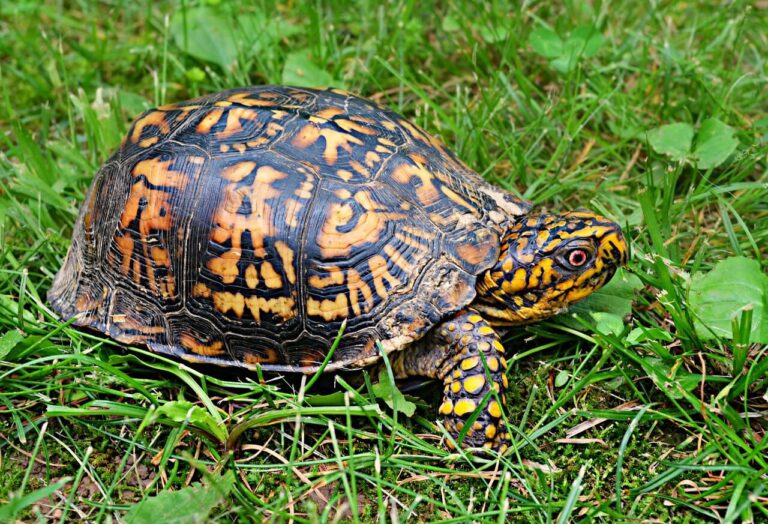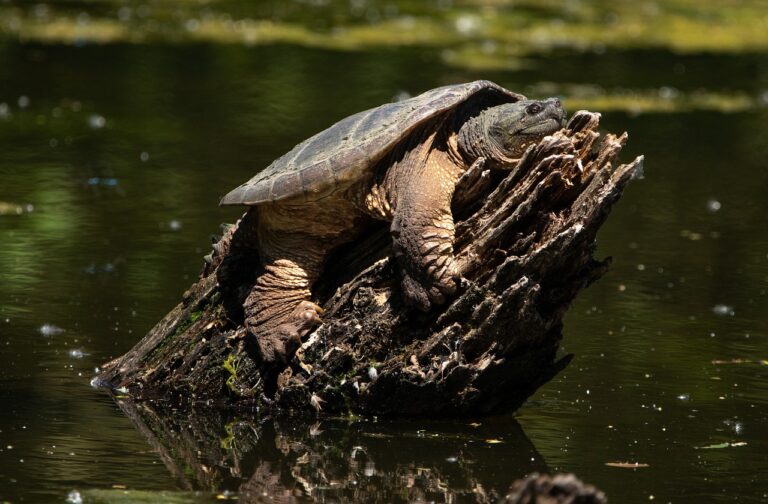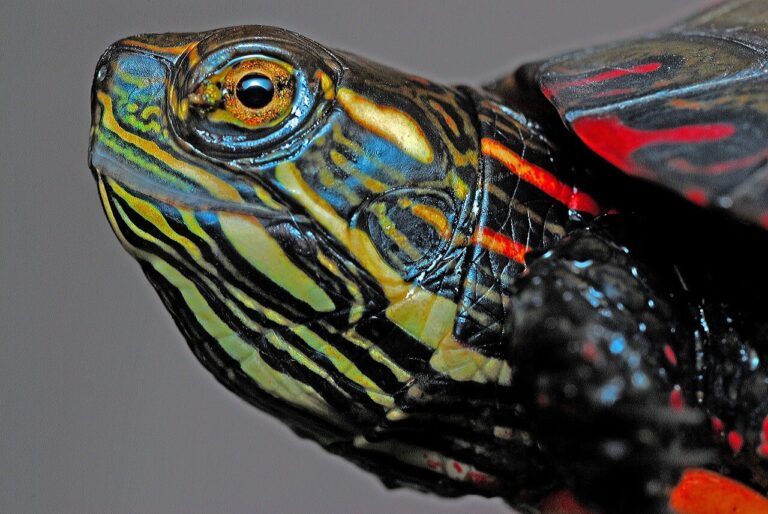Welcome to the world of the Painted Turtle, a captivating and colorful species that has long been admired by aquatic enthusiasts and nature lovers alike. In this comprehensive article, we will delve into the world of the Painted Turtle, exploring its taxonomy, physical characteristics, habitat, behavior, diet, reproduction, conservation status, significance, and much more. By the end of this journey, you’ll have a deep understanding of this remarkable reptile and the critical role it plays in our ecosystem.
Taxonomy and Classification
Kingdom: Animalia
The Painted Turtle belongs to the Animalia kingdom, a vast group that encompasses all multicellular, eukaryotic organisms.
Phylum: Chordata
Within the Animalia kingdom, Painted Turtles fall under the Chordata phylum, which includes animals possessing a notochord at some stage in their development.
Class: Reptilia
Painted Turtles are classified under the Reptilia class, a diverse group of cold-blooded, scaly-skinned creatures.
Order: Testudines
Within the Reptilia class, Painted Turtles are part of the Testudines order, commonly known as turtles and tortoises.
Family: Emydidae
Painted Turtles are further classified under the Emydidae family, which includes freshwater turtles.
Genus: Chrysemys
The Painted Turtle belongs to the Chrysemys genus, a group that encompasses various species of North American turtles.
Species: picta
The scientific name for the Painted Turtle is Chrysemys picta.
Painted Turtles have four recognized subspecies: the Eastern Painted Turtle (C. p. picta), Midland Painted Turtle (C. p. marginata), Western Painted Turtle (C. p. bellii), and Southern Painted Turtle (C. p. dorsalis).
Description
Physical Characteristics
Painted Turtles are known for their striking appearance. Their carapace, or upper shell, is dark with vibrant red or orange markings. These markings extend to the head, neck, and limbs, giving the turtle its name. The plastron, or lower shell, is yellow, and some individuals may have a central dark spot on it.
- Size: Adult Painted Turtles typically measure between 4 to 10 inches (10 to 25 cm) in carapace length, with males being slightly smaller than females.
- Coloration: The coloration of the carapace and skin can vary among subspecies but generally consists of red, orange, and yellow markings on a dark background.
- Shell Morphology: Their shells are relatively flat, helping them move easily in water.
- Distinctive Features: Painted Turtles have webbed feet, allowing them to swim gracefully. They also have a small notch at the rear of their carapace, which distinguishes them from other turtle species.
Sexual Dimorphism
Sexual dimorphism in Painted Turtles is not very pronounced. In some cases, females may be slightly larger than males, and males might have longer front claws. However, distinguishing between the sexes based on physical characteristics alone can be challenging.
Habitat and Range
Painted Turtles are widespread across North America and can be found in various aquatic habitats. Their range includes:
- Countries: The Painted Turtle’s range extends across the United States and Canada.
- Specific Regions: They are commonly found in the eastern and central United States, as well as parts of southern Canada.
Preferred Environment
Painted Turtles are highly adaptable and can inhabit a variety of aquatic environments, including:
- Freshwater: They are often found in ponds, lakes, slow-moving rivers, and marshes.
- Semi-Aquatic: Painted Turtles are equally comfortable basking on logs or rocks near the water’s edge.
Behavior and Diet
Behavior
Painted Turtles are primarily solitary creatures, but they can occasionally be seen basking in groups. They are diurnal, meaning they are active during the day.
Diet
These turtles are omnivorous, with a diet that includes:
- Primary Food Sources: Aquatic vegetation, algae, insects, aquatic invertebrates, and small fish.
- Feeding Habits: They are opportunistic feeders, often snapping at passing prey while in the water.
Reproduction and Life Cycle
Reproductive Behaviors
Painted Turtles engage in courtship rituals in the water. Mating typically occurs in the spring.
Mating Rituals
During courtship, males use their long front claws to stroke the female’s head and neck. Successful mating results in the female laying eggs.
Nesting Habits
Females seek out sandy or loose soil to dig nests, often in areas near water. They can lay anywhere from 2 to 20 eggs per clutch.
Incubation Period
The incubation period for Painted Turtle eggs is around 70 to 80 days, depending on temperature and other environmental factors.
Survival Rate of Hatchlings
Hatchlings are vulnerable to predators, and many do not survive their first year. Those that do mature into adults can live for several decades.
Conservation Status
The Painted Turtle enjoys a relatively stable population throughout its range. According to the IUCN Red List, it is categorized as a species of “Least Concern.” However, various threats can impact their populations, including:
- Habitat Destruction: Urbanization and the draining of wetlands can reduce suitable habitats.
- Pollution: Water pollution can affect the health of Painted Turtles and their food sources.
- Poaching: The illegal pet trade can pose a threat, as can collection for the pet market.
Significance and Importance
Ecological Role
Painted Turtles play a vital ecological role by helping control insect populations and acting as seed dispersers for aquatic plants.
Cultural and Economic Significance
They hold cultural importance in some indigenous communities and contribute to ecotourism and nature-based recreation.
Interesting Facts
- Painted Turtles are known for their ability to hibernate underwater, surviving harsh winters by slowing their metabolic rate.
- The vibrant markings on their skin and shells serve as camouflage in their aquatic habitats.
- These turtles have a keen sense of smell, helping them locate food underwater.
Protection and Conservation Efforts
Conservation efforts for Painted Turtles focus on protecting their habitats, regulating the pet trade, and promoting public awareness of their importance. Individuals and organizations can contribute by supporting local wetland conservation projects and adhering to responsible pet ownership guidelines.
Conclusion
The Painted Turtle, with its captivating appearance and unique behaviors, is a fascinating aquatic species that adds color and vibrancy to North American ecosystems. While it may be categorized as “Least Concern” by conservation organizations, it is crucial to recognize and address the various threats it faces. By understanding the Painted Turtle’s significance and promoting its conservation, we can ensure that future generations continue to marvel at this remarkable reptile in its natural habitat.


